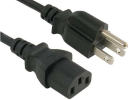Using Techpowerup's review of the FE and their relative performance charts for GPUs. It's interesting.
VS. 3080
VS. 3090
- 500 USD (71%) more compared to 3080 launch price and even worse for current pricing.
- 42% faster.
So, it's horrible value compared to the 3080 and even current 3090 pricing, but at least compares favorably to 3090 launch pricing.
- 300 USD (20%) cheaper than 3090 launch price but 300 USD (33%) more than current 3090 pricing.
- 25% faster.
It obviously compares more favorably to the Ti variants but then the Ti variants were already incredibly bad value products anyway.
If you're suddenly having to find value in a lower tier performance product compared to the highest tier previous product in order to somehow justify the product's pricing. Yuk.
Regards,
SB
The thing is, the 4080 is still faster than both of them by a significant amount. It may not be better in terms of frames/$, but it is better by all technical metrics. People don't buy mid-range gpus instead of high-end ones because they're better value. They buy the one they can afford and that meets the performance level they want. If you want something faster than a 3090, you have two choices, so then it just becomes a question of whether you can afford it.
I also remember when people said the 20 series was overpriced and people bought it. Then the 30 series came out and people said it was too expensive for the 3090 and people bought them up for gaming. And with crypto gamers were buying up cards way above msrp across the board for all classes of gpus. It's likely that what the market is willing to pay is much higher than what nvidia and competitors had been asking for.
Last edited:












